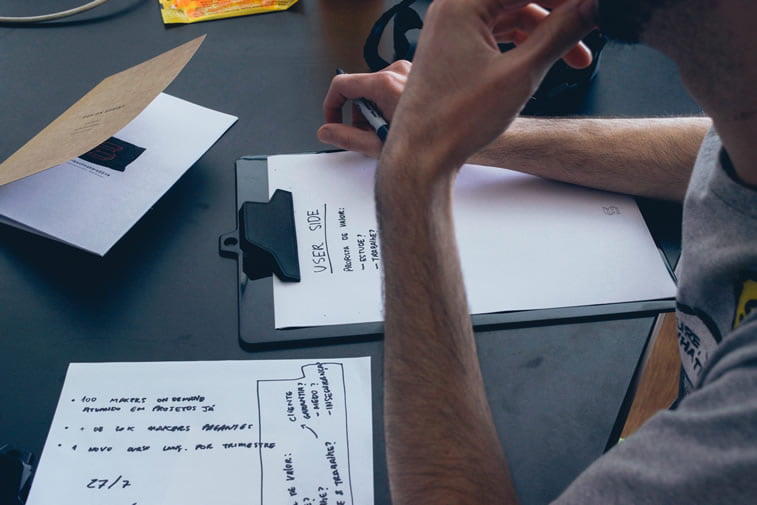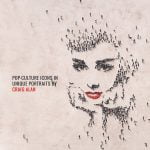“You must stay drunk on writing so reality cannot destroy you”, wrote an American novelist Ray Bradbury in his book Zen in the Art of Writing. He was referring to the art of writing fiction, of course, and here we have just the opposite advice for you regarding the art of the UX writing: for every word that you write, make sure to do the reality check.
In other words, you must stay true to users’ behavior so your imaginativeness cannot destroy your effort.
Okay, so what does that mean? What do user experience (UX) writers actually write about? Are UX designers supposed to be UX writers as well? Isn’t writing something that a copywriter should think through?
Yes, we hear you on that. Ideally, designers should design, and writers should write.
So, in an ideal situation, there would be a professional writer – a UX writer – involved in a complete UX design process – from the ideation to research to development to creation. In real life, though, there is much more of those not-so-ideal situations where UX designers are dealing with writing themselves.
Let us now explain in more details what UX writing is and what is the importance of user experience writing for web design.
What Is UX Writing
The main role of UX writing is to come up with a perfect match of words and images, functions, and other digital elements in order to create an inspiring and consistent narrative.
There is a rising demand for UX writers around the world. As we could see in the UX writing jobs newsletter curated by Gordon Macrae, during the past several months, companies like Amazon, LinkedIn, Slack, Dropbox, Spotify, and many others have been looking for UX writers, a.k.a. content designers, content copywriters, UI writers, etc.
And what exactly is their job?
Some of the key responsibilities of UX writers include:
- Making (and following) company style guides
- Creating and executing a content strategy, both short-term and long-term
- Writing microcopy for CTA buttons, important messages, pop-up windows, etc.
- Long-form copywriting
- Writing for surveys, forms, images, videos, etc.
- Collaborating with different departments (legal, financial, R&D, C-level management, etc.) to align copy with company goals
- Understanding product metrics data and aligning it with content strategy
As you can see, UX writer is kind of a content writer, but there is a difference. UX writer holds a much more specific position than a content writer.
Writing microcopy is another very important UX writing assignment. Microcopy usually refers to a single word or a phrase, that is used to grab the attention of users and bring them more relevant information while guiding them through the website.

Why is UX writing important
Every user needs some sort of direction while using a website, an app, or a software. UX writing bridges a gap between the visual layout and the usability, between the product and its users. Sometimes, there might not be a written description or a guidance included, but in a vast majority of cases, words are part of the step-by-step process on a website. And all those words go under the UX writing wing.
So, strategic thinking and critical approach are necessary for a quality product development.
As Patrick Stafford wrote for the Inside Design blog, „design teams are now fully realizing that words embody just as much design ethic as a wireframe.”
Why is it important to have writers onboard?
- Writers use more conversational language, which makes it easier for users to understand the product
- Writers are able to add feelings to words and get the emotional response from users
- Writers can maintain brand consistency while following the company’s style, a tone of voice, etc.
- Writers are detail-oriented and they tend not to miss the misspellings, misplaced commas, or incorrect phrases in the text, which makes the product more trustworthy.

How to excel in UX writing
Imagine the user persona and walk in their shoes
“Every great design begins with an even better story”, said a designer and a creative director Lorinda Mamo. Storytelling is certainly one of the best ways to create a narrative that will empower your brand or a digital product.
Storytelling is also a great way to build an exquisite user experience. How come? Well, if you want to design for users, you should start thinking like users. So, you should imagine a so-called user persona that would represent an average user of your products or services.
You can delve into a design thinking process for the UX and use the empathy maps to find out what does your pesona says, does, thinks, and feels. Then, you can use the method of user journey mapping to visually present every step of the way your persona is going to take while interacting with your digital product – website, web app, SaaS, e-shop, mobile app…
Once you have your user imagined and contextualized, you can start telling their story and see where would that get you. It would make much easier for you to notice the pain-points and flaws of the product design.
Be careful, though. When you imagine an average person, you may fall in a trap of stereotyping, concluding from assumptions, and spending too much time on thinking about unnecessary details. So, try not to end up contemplating over dilemmas like ’does this persona love cats or prefer dogs’, ’should this persona own one or two cars’, ’is this persona a vegetarian or a vegan’, etc. If these questions are not essential for your research, forget about them. Do not go too deep into the story.
Ask the right questions and the answers will follow
Albert Einstein once said: “If I had an hour to solve a problem, I would spend the first 55 minutes determining the proper question to ask, for once I know the proper question, I could solve the problem in less than five minutes.”
You can apply this formula to the UX design process as well. You should spend a lot of time in defining specific user problems and asking the right questions, because once you have a problem properly framed, you should be able to find a solution pretty fast.

Be curious and analytical
In the beforementioned article, Patrick Stafford also explained that „UX writers conduct research, understand best UX practices, and create entire user experiences from end-to-end”.
So, besides writing skills, UX writers should develop the analytical approach to every project, resulting in tracking data, analyzing great amounts of information, and acting upon the insights.
That requires deep involvement with a project. Therefore, it is crucial for writers to have the right mindset and to possess the right skill set for such a role.
Conclusion
Companies around the world are becoming much more aware of the significance of the original digital content. That has led to a certain boom in the job market demand for UX writers. Design teams around the globe are realizing the importance of the right words chosen within the wireframing and prototyping process. Every word counts. And every word has a certain impact on users behavior.
Web designers and developers work closely together on many projects. And that works perfectly fine for small-size products. But for creating a website for a large-scale organization, though, or the entire design system, there should be a complete team of professionals – managers, web designers, developers, copywriters, SEO specialists, and others – working side by side on the project.
If you are planning to build a new website for your business and you would like to hire web design experts, well, search no more. Do not worry if the team you want to cooperate with is not in your neighborghood. You can always outsource the experienced crew, wherever you are in the world. The most important thing is to get a high-quality web design and be satisfied with the final outcome in the end.





